TECH TUESDAY: Why France proved inconclusive for Ferrari and Renault upgrades

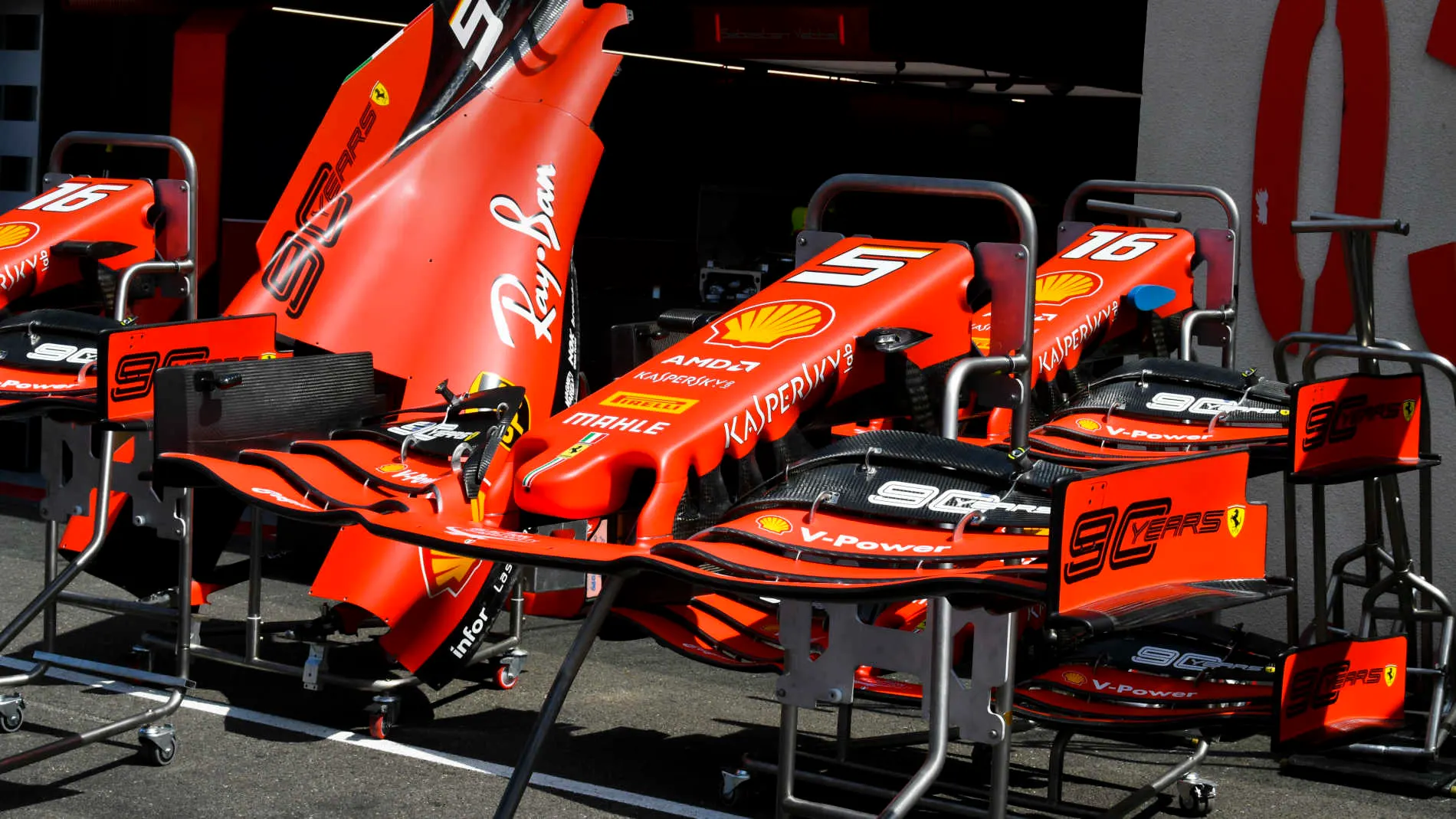
Two teams – Ferrari and Renault – arrived in Paul Ricard with significant aerodynamic upgrades. This was simply the phase of the season in which each of the teams had their developments ready and, in the case of Renault, it was important to show well in its home race. However, the nature of the circuit – specifically the big variability in conditions – make it less than ideal for assessing the effectiveness of upgrades.
Not only is the Mistral wind regularly a randomising factor, but the scorching weather in the south of France at this time of year means the track surface is invariably way past the threshold for peak tyre grip. At least from the perspective of outside the teams, the upgrades were inconclusive...
What was new on the Ferrari
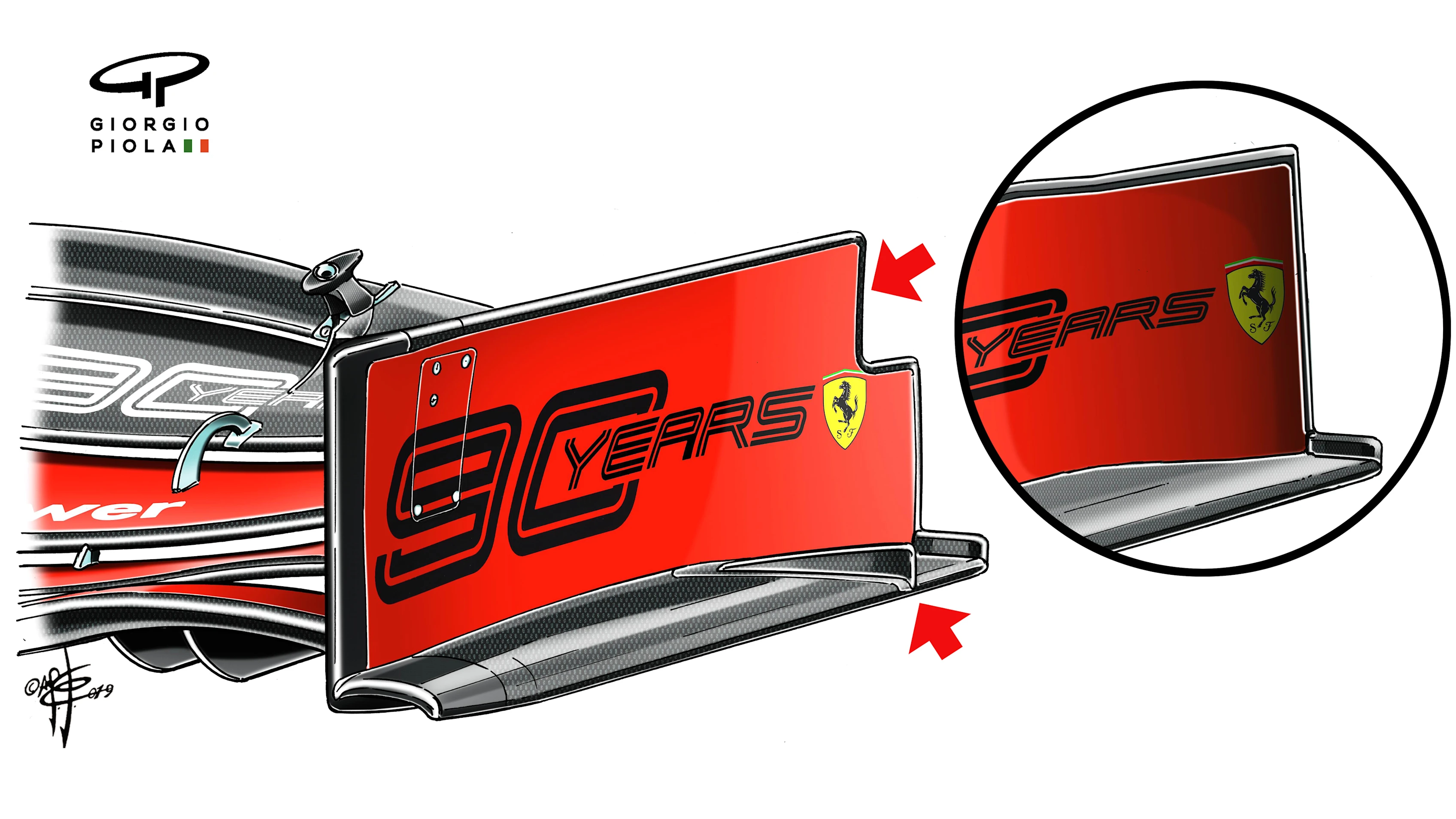
The Ferrari featured revisions to front and rear wings, front brake ducts and floor. At the front, the top rear corner of the endplate was cut away (as shown above), in much the same way as Mercedes did earlier in the season. This was done in conjunction with an additional fin at the base of the endplate to enhance the outwash around the front tyre.
The floor featured additional vortex generators on its outer flanks, to further accelerate the airflow along the body sides and thereby create extra underfloor downforce as that flow exits around the top and sides of the diffuser and creates a pull on the flow coming through it. The front brake ducts had additional small fins beneath to refine the direction of the flow to the barge boards. The rear wing endplates no longer featured the lower-most array of finger vanes.
After running with these features on Friday, the new floor was replaced by the standard one for the remainder of the weekend, but the modified wings and brake ducts remained on.
What was new on the Renault?
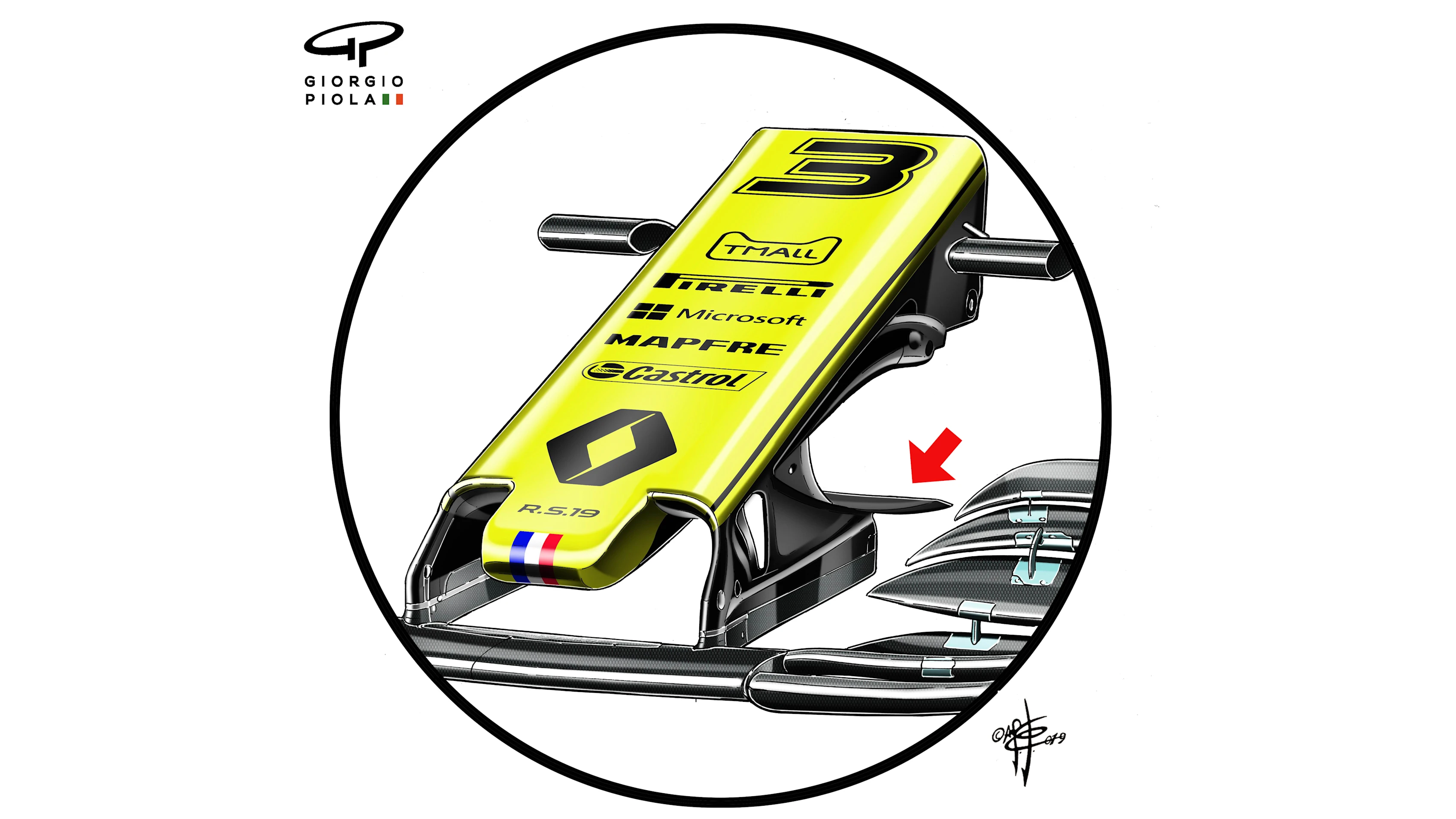
Renault’s upgrade was arguably bigger and was based around a reconfigured cooling system that allowed the rear bodywork ‘coke bottle’ profile to be enhanced. This sudden reduction in the width of the bodywork creates a pressure drop that the oncoming air rushes to fill, thereby accelerating the speed along the whole side of the car and giving a bigger boost to the underfloor downforce as it merges with the flow coming through the diffuser.
Further helping accelerate that airflow was a new Mercedes-like ‘cape’ under the nose (see above), directing air from around the nose downwards, injecting more energy into the whole the barge board area (pictured below) and thereby boosting what they do – which is twofold. Some of the vanes are there to accelerate the airflow down the bodysides, some are directing the flow outwards away from the body sides so as to keep the outwash airflow that has come around the front tyres separate, rather than merging and slowing that crucial body side flow. There were associated changes to the Renault’s floor and diffuser to take advantage of these upgrades.
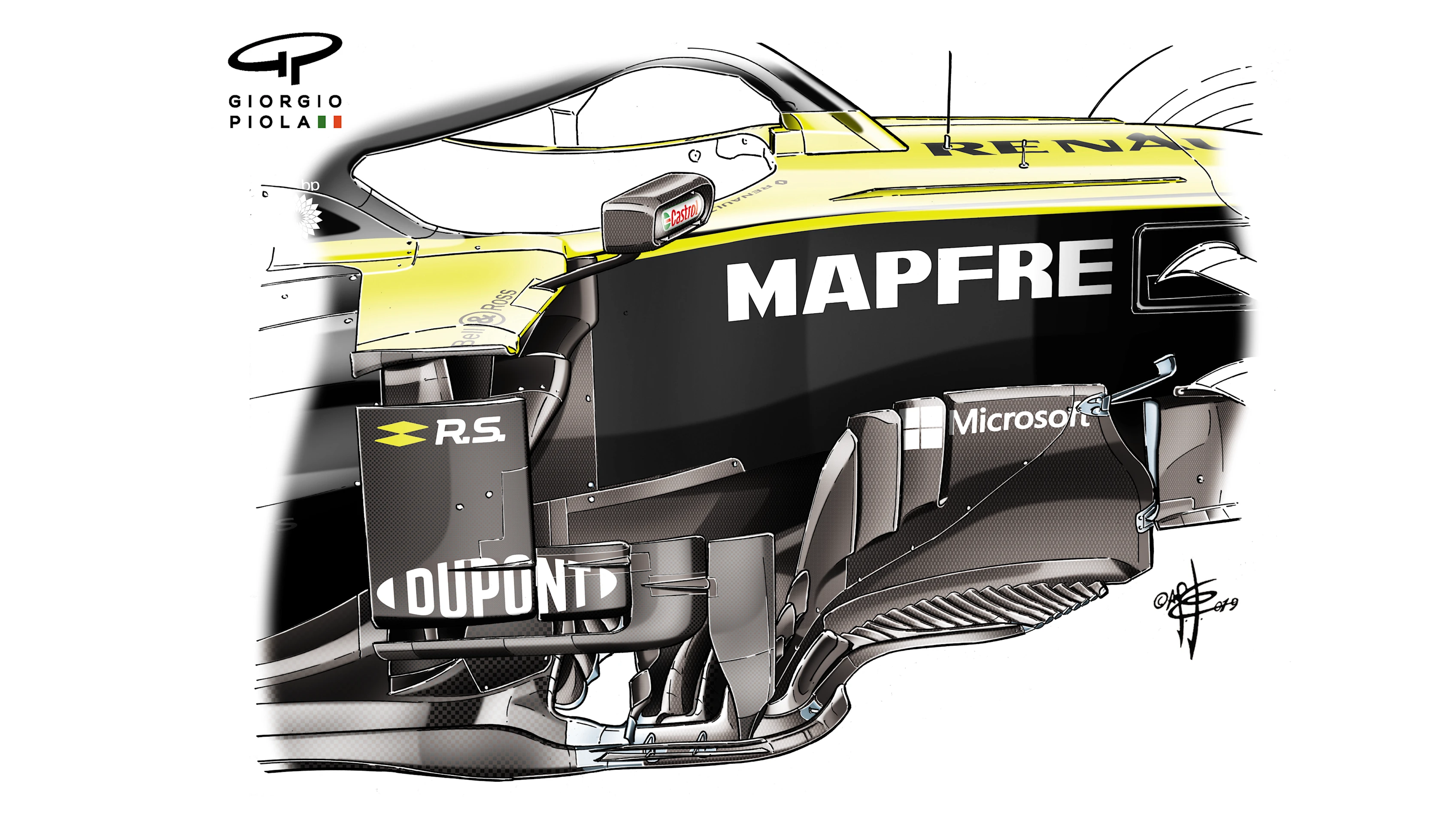
What were Ferrari trying to achieve?
In simple terms, both teams are chasing more downforce. But the Ferrari specifically lacks front end downforce in slow corners relative to Mercedes, whereas the Renault has tended to be a more rear-limited car.
On the Ferrari, the additional ‘mushroom’-style vortex generators on the outer floor suggest that the airflow along the bodysides needed to be re-energised. If successful, this would boost underbody downforce, but typically that would bring more benefit to rear than the front. In order to keep the car balanced, such a boost would require a matching increase in downforce at the front. Because of its front wing philosophy - with the tapered down elements at the outboard ends to aid the outwash around the tyres - Ferrari is somewhat limited in this regard.
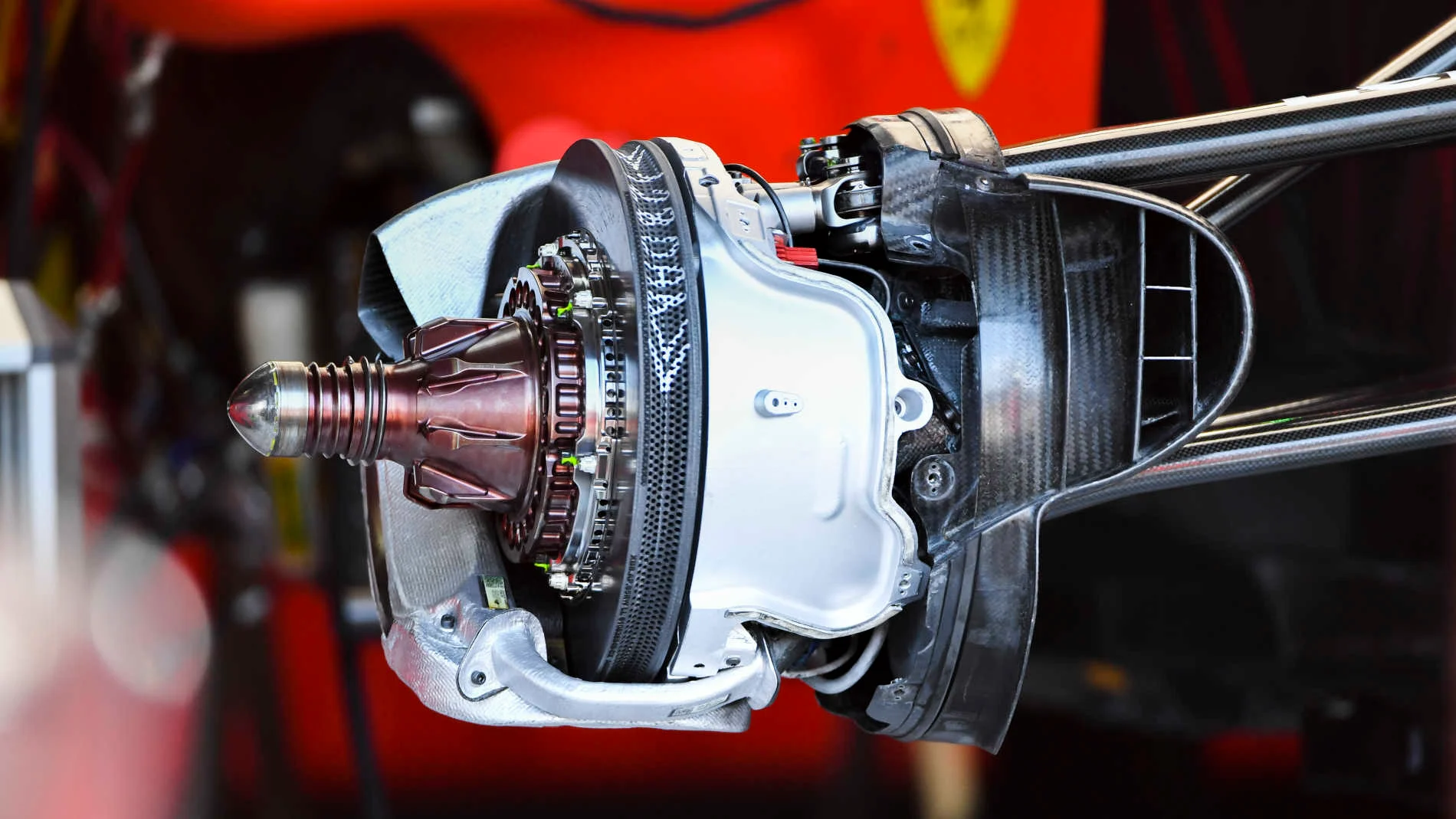
So it would appear that the front wing changes - with the subtly re-worked shape of the wing elements, the additional outwash fin on the endplate base and the cutaway of the rear corner on the endplate – are all trying to squeeze more outwash power so as to allow the front wing itself to generate more direct front downforce while still retaining the necessary outwash (the two requirements conflict somewhat).
The mini-fins beneath the brake ducts are probably part of the same flow regime – in other words they are part of a package aimed at something specific.
Ferrari removed the floor after Friday practice, feeling that it did not give the results expected. The front wing and brake duct changes remained on the car, suggesting that they were giving more front downforce, even if not to the extent required.
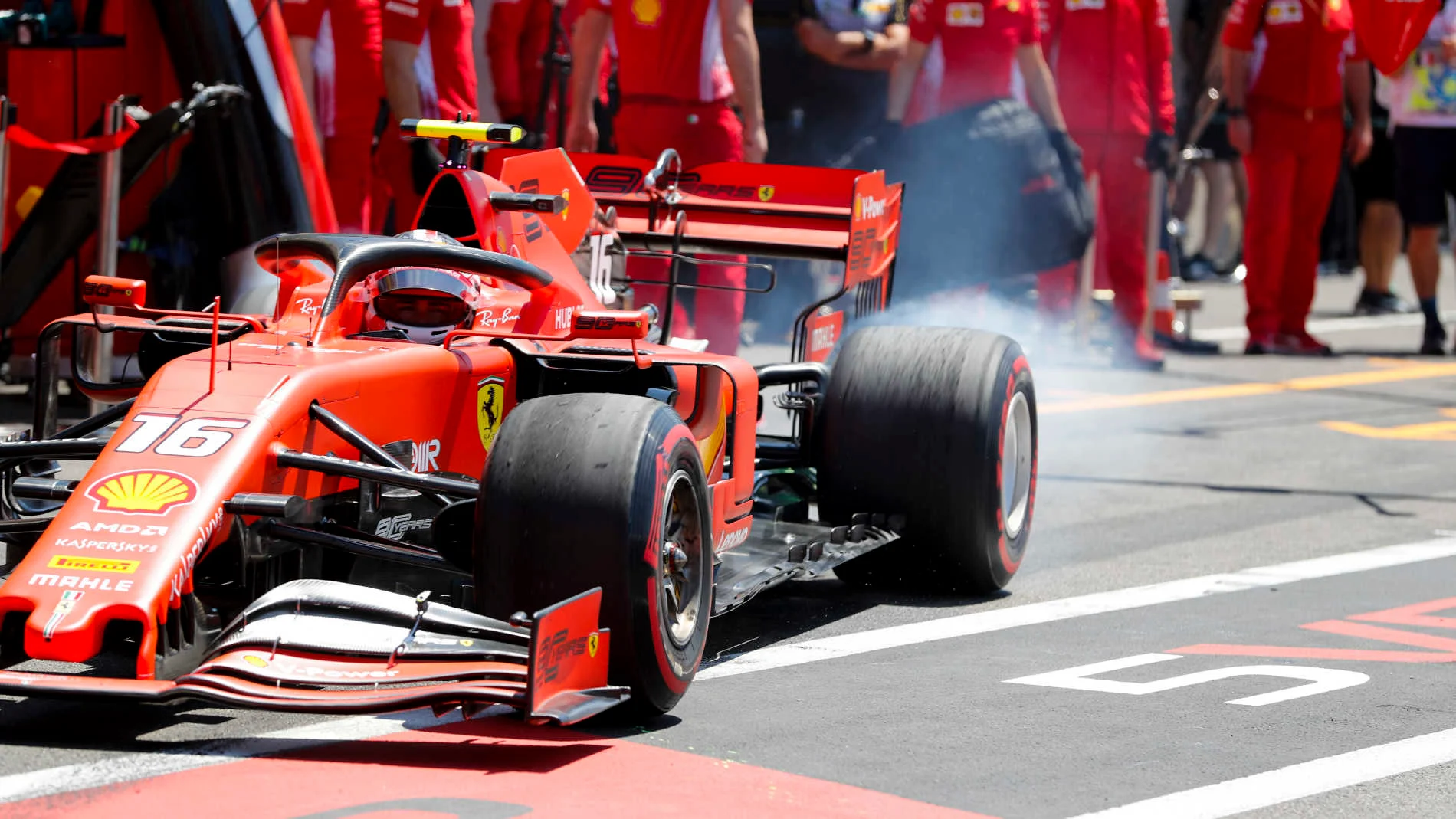
“I don’t think we got all the answers from this weekend because the floor not working properly gives us a lack of answers,” said Scuderia boss Mattia Binotto post-race. “So we will still work on that one and have some test items again in Austria and try to better understand. I think we will fully understand when all the parts will properly work as expected.” It was very difficult to judge the success or otherwise of the changes, given that Paul Ricard, because of its many long-duration corners, is not the ideal circuit for a low drag/downforce car such as the Ferrari.
What were Renault trying to achieve?
At Renault, the changes would all theoretically address the car’s rear downforce weakness. But, as with Ferrari, the results were inconclusive although the update did remain on the cars of both Daniel Ricciardo and Nico Hulkenberg throughout the weekend. With an upgrade package that simulation suggested was worth around 0.5s of lap time, the highest-qualifying Renault was only within 101.81% of pole – which is only its fourth-best out of the eight races so far.
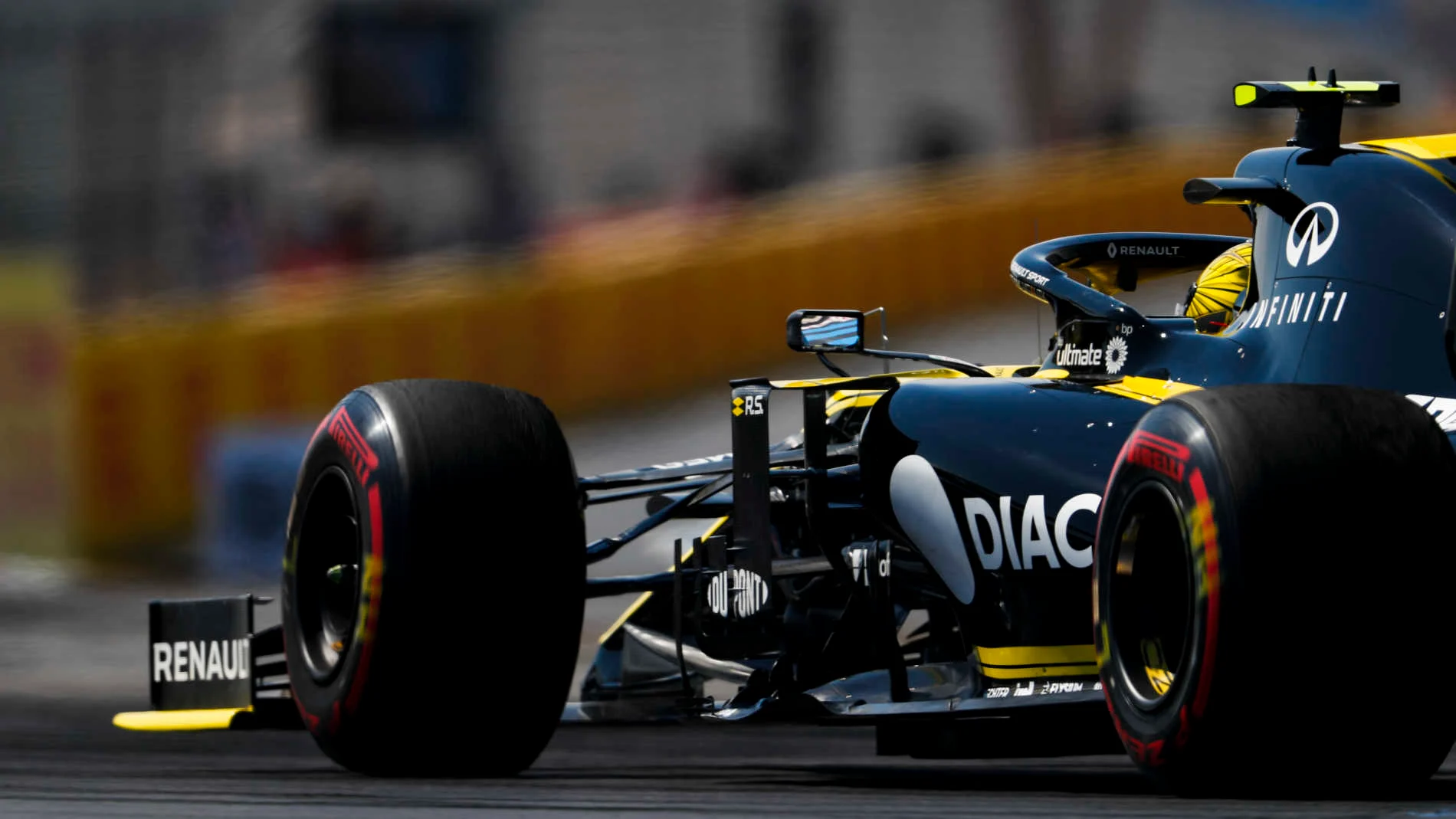
Breaking down where the times losses were over the Ricard lap is quite illuminating because the three sectors there demand quite different qualities of a car. The first sector asks a lot of low speed aerodynamics and direction change. The Renault was a whopping 2.565% off the fastest time there. Sector 2 is largely about engine power and aerodynamic efficiency and there, the R.S.19 was only 1.209% adrift of the fastest.
In the high speed aero-demands of Sector 3 it was 1.846% adrift. Might it have been that the low speed responsiveness of the car was hurt by improvements to the rear? After observing on-board footage of the McLaren drivers Hulkenberg observed that they had a much more consistent balance through the long corners than the Renault. As far as he was concerned, the RS19’s aero balance was changing too much under different dynamic conditions, meaning he could not attack corners with as much confidence as he’d like.
Although competing at different parts of the grid, the pressure is very much on for these two teams and it will be interesting to see how long before the potential of these latest developments can be unlocked.
Next Up
Related Articles
 F1 AcademyHaas name Countryman as 2026 F1 ACADEMY driver
F1 AcademyHaas name Countryman as 2026 F1 ACADEMY driver ExclusiveVesti on life as Mercedes reserve and his F1 plan
ExclusiveVesti on life as Mercedes reserve and his F1 plan Marko ‘believed in me when others didn’t’ – Lindblad
Marko ‘believed in me when others didn’t’ – Lindblad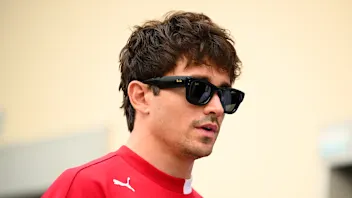 Leclerc calls Ferrari’s focus shift to 2026 a ‘no-brainer’
Leclerc calls Ferrari’s focus shift to 2026 a ‘no-brainer’ ExclusiveHow APXGP was brought to life by costume designer Julian Day
ExclusiveHow APXGP was brought to life by costume designer Julian Day 10 ways to get your Formula 1 fix during the winter break
10 ways to get your Formula 1 fix during the winter break